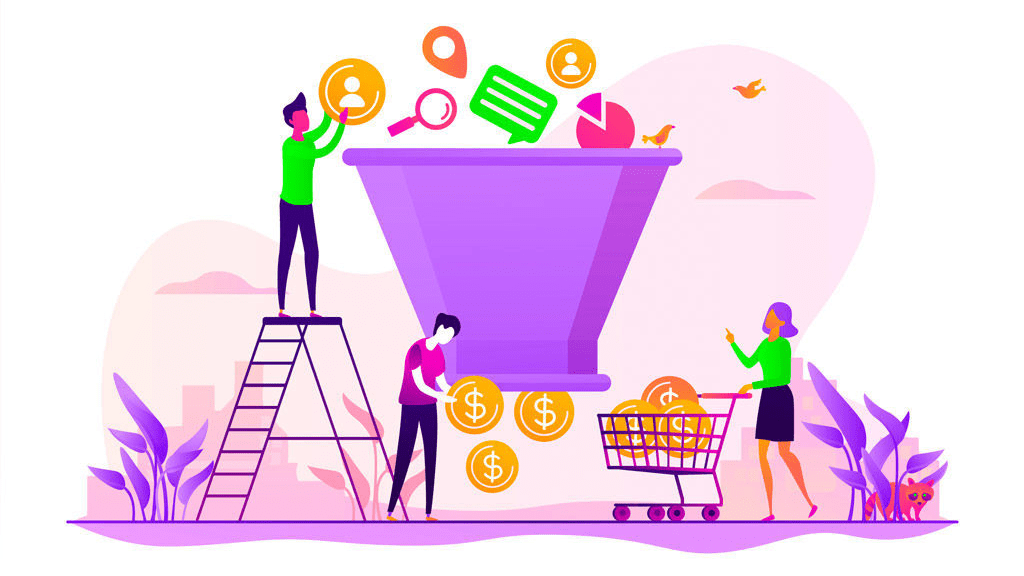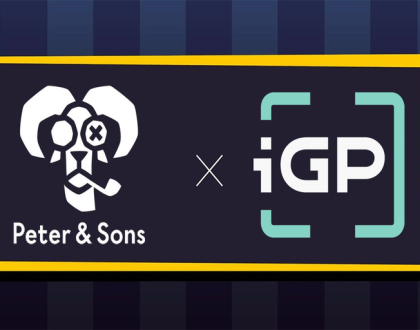Difference between Customer Journey and Sales Funnel

When you look at a customer journey, it may seem at first glance very similar to a sales funnel. After all, both structures guide an unknown person to become a new customer and beyond. However, there is a significant difference: the sales funnel is designed from the company’s perspective, while the customer journey is designed from the customer’s perspective.
The sales funnel is a useful tool to consider whether all essential phases of acquiring new customers have been taken into account. However, the customer journey and especially the customer journey map help you to take the perspective of your customers and consider the details.
This change in perspective is essential for your content activities. It ensures that you focus on emphasizing the benefits of your offers for your customers rather than just the features. You should also consider the questions, problems, or doubts that your (potential) customers may have.
This approach is especially helpful in content marketing. You want to build trust and establish a relationship with relevant and helpful content. It also helps you to write effective sales pages and product descriptions that resonate with your target audience.
Understanding the Customer Journey and Sales Funnel
What is a Customer Journey?
A customer journey is the sum of all experiences that a customer has with a brand, from the initial contact to post-purchase interactions. It includes every touchpoint, whether online or offline, that a customer has with a brand. A customer journey is not linear; it can be complex and involve multiple channels.
What is a Sales Funnel?
A sales funnel is a visual representation of the customer journey that focuses on the stages of the buying process. It starts with the awareness stage, where a potential customer becomes aware of a product or service, and ends with the purchase stage. The sales funnel consists of different stages that represent different levels of engagement with the brand.
The Key Differences
The primary difference between a customer journey and a sales funnel is the perspective. A sales funnel is a representation of the buying process from the company’s point of view, while a customer journey represents the customer’s experience with the brand. The customer journey includes all interactions, whether they lead to a sale or not, while the sales funnel focuses on the steps that lead to a sale.
How to Use the Customer Journey and Sales Funnel
Understanding Your Customer’s Journey
To use the customer journey effectively, you need to map it out. This involves identifying all the touchpoints that a customer has with your brand and evaluating how they contribute to the overall experience. This helps you understand how to improve the customer experience and identify opportunities for growth.
Using the Sales Funnel to Drive Sales
The sales funnel is an effective tool for increasing conversions and sales. By understanding the different stages, you can identify where potential customers drop off and develop strategies to address these issues. For example, if you notice that many customers abandon their cart during the checkout process, you could offer free shipping to encourage them to complete their purchase.
Integrating the Customer Journey and Sales Funnel
To maximize the effectiveness of your marketing efforts, it’s essential to integrate the customer journey and sales funnel. By aligning your content and messaging with the different stages of the sales funnel, you can provide a seamless experience for your customers. This involves creating content that addresses the needs and concerns of customers at each stage of the funnel.
Conclusion
While the customer journey and sales funnel may seem similar, they are designed from different perspectives. The customer journey represents the customer’s experience with the brand, while the sales funnel focuses on the steps that lead to a sale. By understanding and integrating both approaches, you can improve the customer experience, increase conversions, and drive sales.
FAQs
What is the difference between a customer journey and a sales funnel?
The main difference between a customer journey and a sales funnel is the perspective. A sales funnel is designed from the company’s point of view and focuses on the stages of the buying process that lead to a sale. On the other hand, a customer journey is designed from the customer’s perspective and includes all interactions with the brand, whether they lead to a sale or not.
Why is it important to consider both the customer journey and sales funnel?
Considering both the customer journey and sales funnel allows you to have a more comprehensive understanding of the customer experience. By mapping out the customer journey, you can identify opportunities for growth and improve the customer experience. By using the sales funnel, you can identify where potential customers drop off and develop strategies to address these issues.
How can I use the customer journey to improve my content marketing?
To use the customer journey effectively, you need to understand the touchpoints that a customer has with your brand and evaluate how they contribute to the overall experience. This helps you understand how to improve the customer experience and identify opportunities for growth. By creating content that addresses the needs and concerns of customers at each stage of the funnel, you can provide a seamless experience for your customers.
How can I use the sales funnel to increase sales?
By understanding the different stages of the sales funnel, you can identify where potential customers drop off and develop strategies to address these issues. For example, if you notice that many customers abandon their cart during the checkout process, you could offer free shipping to encourage them to complete their purchase. By providing a seamless and enjoyable experience for your customers, you can increase conversions and drive sales.
How can I integrate the customer journey and sales funnel?
To integrate the customer journey and sales funnel, you need to align your content and messaging with the different stages of the sales funnel. By creating content that addresses the needs and concerns of customers at each stage of the funnel, you can provide a seamless experience for your customers. This involves understanding the touchpoints that a customer has with your brand and evaluating how they contribute to the overall experience.
Recommended Posts

Peter & Sons Alliance with iGaming Deck
May 20, 2024

Best Spots for Bird Watching in Malta
May 20, 2024

Overview of Business Finance in Malta
May 17, 2024




